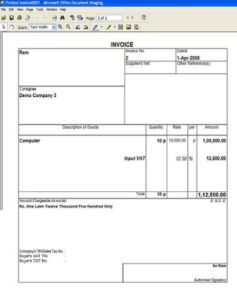
The shorter the period of time a company has accounts receivable balances, the better, as it means the company can use that money for other business purposes. Automation has revolutionized various aspects of account management, particularly in accounts receivable. By utilizing AR automation technology, companies can streamline tasks like generating shareholders equity formula invoices, sending reminders, and tracking payments. As a result, businesses can expedite revenue collection, decrease errors, and enhance customer satisfaction. Accounts receivable (AR) is the balance of money owed to a company by its customers for goods or services purchased on credit.
CRM automation features such as invoice reconciliation, collection workflows, payment portals, and remittance generation can contribute to more timely payments. A well-handled accounts receivable system is not just about financial finesse; An effective AR management tool keeps cash flow healthy and guarantees timely payment. AR management entails clear procedures and best practices, including determining credit terms, issuing timely invoices, providing suitable payment choices, and following up on late payments.
Many collection issues stem from customer dissatisfaction with post-sales support. As a member of the finance team, you should ensure that all sales-related documentation reaches the customers timely. Additionally, you can streamline the invoicing process with meticulous attention to detail. However, bill of materials engineering the benefits go beyond materializing sales and improving cash flows.
Accounts Receivable Turnover
Furthermore, accounts receivable are classified as current assets, because the account balance is expected from the debtor in one year or less. Other current assets on a company’s books might include cash and cash equivalents, inventory, and readily marketable securities. Accounts receivable, or receivables, provision definition in the cambridge english dictionary can be considered a line of credit extended by a company and normally have terms that require payments be made within a certain period of time. Depending on the agreement between company and client, the payment might be due in anywhere from a few days to 30 days, 60 days, 90 days, or, in some cases, up to a year.

Financial Statements and Impact
Going through lockbox files to apply payments to invoices still takes work. Most B2B businesses still accept a significant volume of paper checks, with a recent survey by AFP pointing to 92% of organizations continuing to use checks for incoming payments. To support this, businesses will often resort to managing multiple lockboxes (where a bank receives and processes checks for you).
What Are the Benefits of Managing Accounts Receivable (AR)?
- Finally, legacy applications used in accounts receivable management are often time-consuming and labor-intensive.
- DSO can vary significantly across industries and businesses, so it’s essential to consider context when interpreting this metric.
- This section briefly discusses the primary components of accounts receivable, focusing on invoice management and revenue recognition.
- Building an effective accounts receivable management is critical to maintaining a positive cash flow and fostering a successful customer relationship.
One of the primary goals of accounts receivable management is to ensure the timely collection of outstanding invoices. This ensures strong cash flow and can strengthen your customer relationships. Understanding how to manage accounts receivables cycle, also known as the order-to-cash cycle, is like following a step-by-step process from making a sale on credit to getting and recording the payment. It begins with checking if customers are good for credit and ends with dealing with any bad debts. Implementing efficient invoice management systems can lead to improved cash flow and a higher accounts receivable turnover ratio, indicating that customers are paying promptly. The timing for this can vary by industry and should be in line with your company’s financial policies.
Net receivables is an accounting term for a company’s accounts receivable minus any receivables it has reason to believe it will never collect. It is typically expressed as a percentage of uncollectible debts relative to collectible ones, and the lower the percentage, the better. A receivable is created any time money is owed to a business for services rendered or products provided that have not yet been paid for. For example, when a business buys office supplies, and doesn’t pay in advance or on delivery, the money it owes becomes a receivable until it’s been received by the seller. Company B now owes Company A money, so it lists the invoice in its accounts payable column.
Establishing effective two-way communication is vital, both internally and externally. This may seem like an obvious factor, but it is often ignored, especially when it comes to the finance team and customers. Enable easy-to-use and numerous options for stakeholders—both internal and external to interact in the way they choose to. Add a Pay Now button to your invoices and let customers pay online 4x faster than with paper invoices. However, paying a service provider will most likely be significantly more expensive than hiring your own staffer or contractor, or even using software in-house.
Once a payment is received, it needs to be posted to the corresponding invoice(s). However, this process can sometimes be challenging due to factors such as missing remittance advice or discrepancies between the provided payment information and open invoices. Some payment service providers will wrap all of this up into one offering. Periodically review the credit terms for existing customers, especially if their order volume increases or their payment behavior changes. When a customer decides to make a purchase, they’ll typically send a purchase order. Upon approval, a sales order is generated, which serves as a binding agreement detailing the goods or services, their quantity, price, and other terms of the sale.
